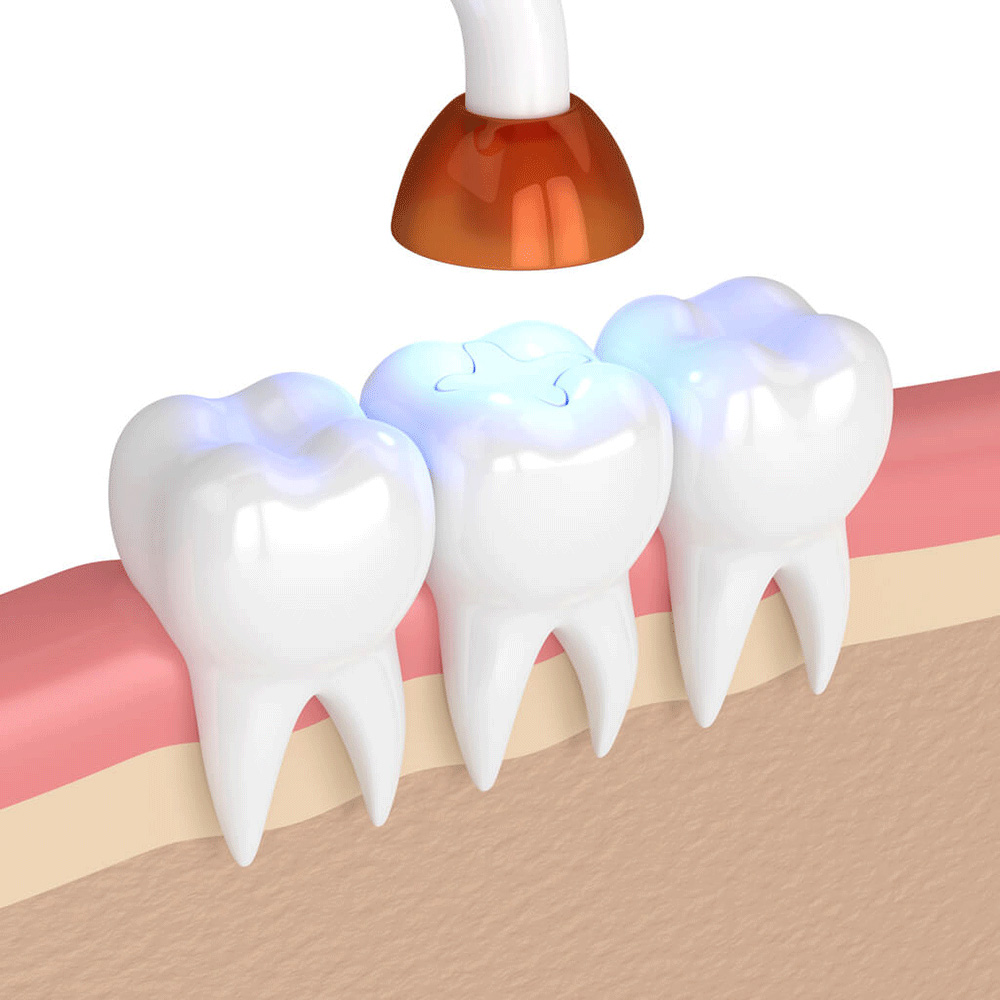Fillings and Sealants
Tooth decay and cavities are both common dental issues. Receiving tooth-colored fillings can restore your teeth and help to prevent simple decay from becoming something worse.
Tooth Fillings and Sealants
Cavities are one of the most common dental problems. Even with good oral hygiene and regular dental cleanings, it’s still possible for decay to eat into your tooth enamel. Fortunately, repairing cavities often involves no more than tooth fillings, one of the most common dental treatments. We use tooth-colored composite fillings instead of amalgam fillings, which contain metal and mercury, to match them to the color of the rest of your teeth.
The best way to deal with cavities is to prevent them from occurring in the first place. We recommend visiting our office every six months for dental cleanings. Our hygienists will remove plaque and bacteria from your teeth using instruments that make it simple to get into hidden spots that are easy to miss when brushing and flossing at home. We may also recommend additional general dental care, like dental sealants, to help prevent decay.

-
How do dental fillings for cavities work?
Cavity and tooth fillings are required when decay leaves holes in teeth. Left unchecked, the decay will continue to spread and damage the tooth’s hard material and, eventually, the inner pulp and root system. During the filling procedure, dentists clean away decay inside the cavity with a drill. However, because this doesn’t fix the damage that is already there, a filling is necessary. The filling intends to replace the part of the tooth that was destroyed by tooth decay. Your dentist will mold the filling to fit the shape of the existing tooth to restore its structural integrity and protect the softer enamel exposed by decay.
-
What types of fillings are there?
There are several types of materials used for teeth fillings, including gold, porcelain, silver amalgam (an alloy consisting of mercury mixed with silver, tin, zinc, and copper), tooth-colored plastic, composite resin, and glass ionomer. The material used depends on your dentist, the extent and location of your tooth decay, and your insurance coverage.
-
Is tooth sensitivity after a filling normal?
When you get a filling, the area around the infected tooth is numbed. You shouldn’t feel anything for an hour or two after your appointment, but once the numbing wears off, it’s normal to feel pain in your teeth and gums.
It’s common to experience pain when drinking or eating anything hot or cold. It is also not uncommon to feel pain or greater than usual sensitivity when you brush or floss near the infected tooth.
Minimize Tooth Sensitivity
You can reduce the sensitivity in your teeth and gums by:
- Taking an anti-inflammatory drug that contains ibuprofen
- Rinse your mouth with 1/2 to 3/4 tsp of salt mixed with warm water. This can reduce inflammation
- Temporarily avoiding hot, cold, or acidic foods and drinks.
- Brush and floss gently
- Use a desensitizing toothpaste like Sensodyne or Colgate Sensitive
More Questions?
If you have more questions about fillings and sealants, contact our office and we will be happy to discuss further.

